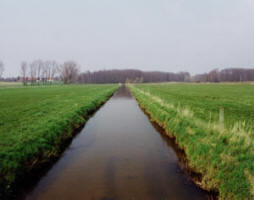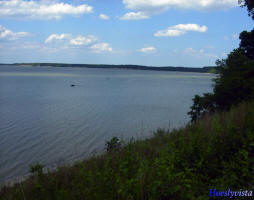 Climate change: what do models predict for Europe?
Climate change: what do models predict for Europe?
Records show temperatures have increased in Europe – but what changes can we expect to see in the future? Experts at the European Environment Agency (EEA) have produced a series of maps showing projected changes in temperature and precipitation for this century.
The maps have been produced in Eye on Earth, a global public information service which allows users to integrate many different kinds of information, for example combining different map layers.
Europe will be in average 1.5° C warmer in the period 2021-2050 than the period 1960-1990, according to the ensemble of regional climate projections from the ENSEMBLES project. The highest warming is projected over the eastern Scandinavia, and southern and south-eastern Europe. All areas of the continent will warm by a minimum of approximately 0.4° C and a maximum of 2.5° C, the projections indicate.
Increasing precipitation in northern part can lead to more flood events in the future. The clear projection of decreasing precipitation in southern part together with an increase of temperature will probably lead to more frequent and longer droughts, which will have significant effects on agriculture and tourism industries, especially in the Mediterranean area.
Agriculture is extremely water-intensive in some Mediterranean countries, accounting for up to 80% of water use. These maps show that many countries will need to adapt their agricultural systems to deal with less water, or water at different times of year.
The climate change data behind the maps comes from 25 different Regional Climate models, run in the frame of ENSEMBLES project, under A1B emission scenario. This particular scenario assumes rapid economic growth, a global population that grows to 9 billion in 2050 and then gradually declines. Income and lifestyles converge across different regions, and new and efficient technologies are taken up. Energy is expected to come from a range of renewable and fossil sources.
It is important to note that this is just one scenario, so this outcome is not certain. By rapidly cutting emissions – for example by replacing fossil fuels with renewable energy technologies – the world could slow the pace of climate change, and the impacts seen on these maps could be much reduced.
But Europe will also need to adapt. The EEA and the European Commission recently launched Climate-ADAPT, a web resource aimed at policy makers and 'practitioners' – engineers, planners and administrators – who can learn from the experience of others facing similar challenges already carrying out adaptation actions elsewhere.
Maps
Temperature
- Annual temperature changes for 2021-2050
- Summer temperature changes 2021-2050
- Winter temperature changes 2021-2050
- Annual temperature changes for 2071-2100
- Summer temperature changes 2071-2100
- Winter temperature changes 2071-2100
Precipitation
- Annual precipitation changes for 2021-2050
- Summer precipitation changes 2021-2050
- Winter precipitation changes 2021-2050
- Annual precipitation changes for 2071-2100
- Summer precipitation changes 2071-2100
- Winter precipitation changes 2071-2100
| Contact information | n/a |
|---|---|
| News type | Inbrief |
| File link |
http://www.eea.europa.eu/highlights/climate-change-what-do-models?&utm_campaign=climate-change-what-do-models&utm_medium=email&utm_source=EEASubscriptions |
| Source of information | EEA |
| Keyword(s) | Climate change |
| Subject(s) | HYDRAULICS - HYDROLOGY , INFORMATION - COMPUTER SCIENCES , MEASUREMENTS AND INSTRUMENTATION , METHTODOLOGY - STATISTICS - DECISION AID , NATURAL MEDIUM , RISKS AND CLIMATOLOGY , TOOL TERMS , WATER DEMAND |
| Relation | http://www.emwis.net/topics/climatechange |
| Geographical coverage | n/a |
| News date | 03/05/2012 |
| Working language(s) | ENGLISH |
 you are not logged in
you are not logged in





